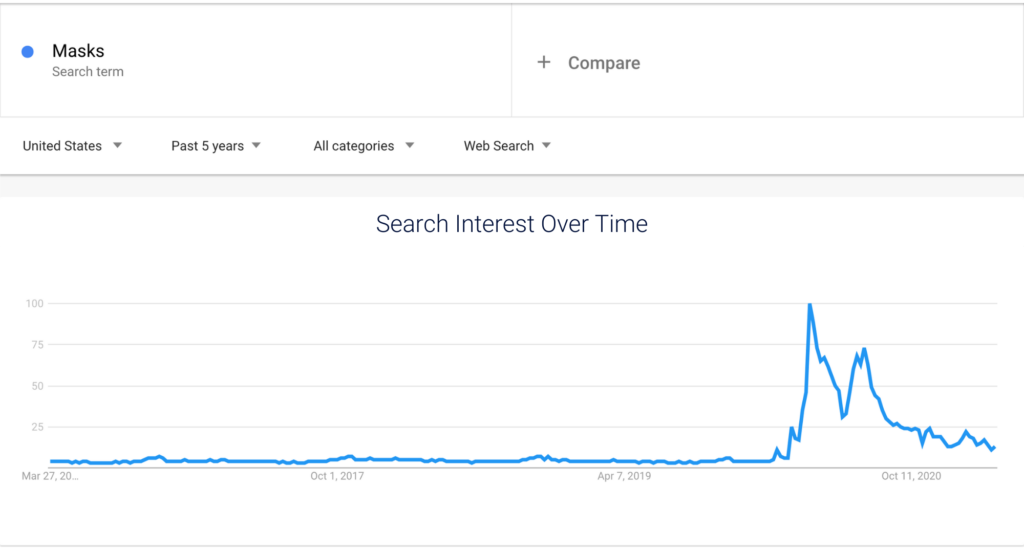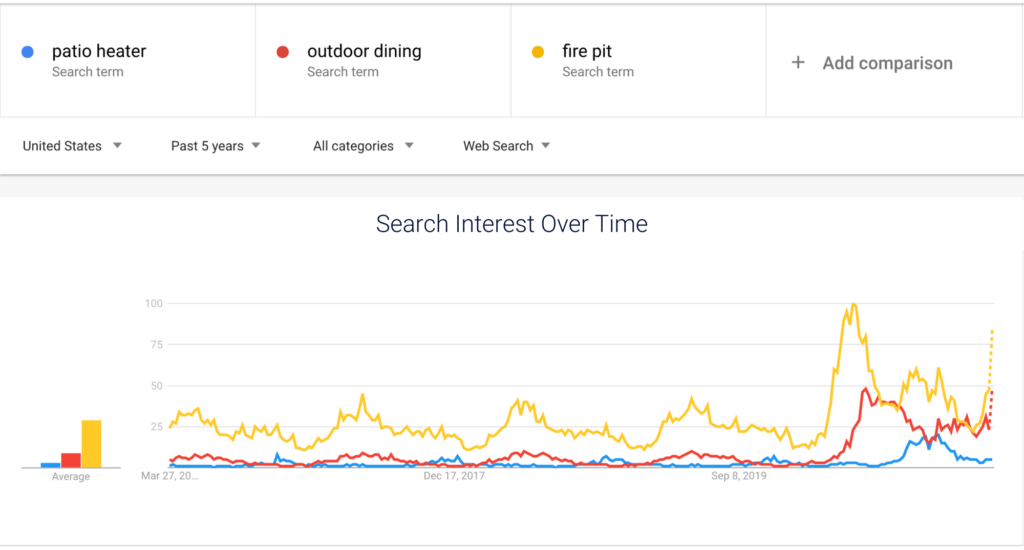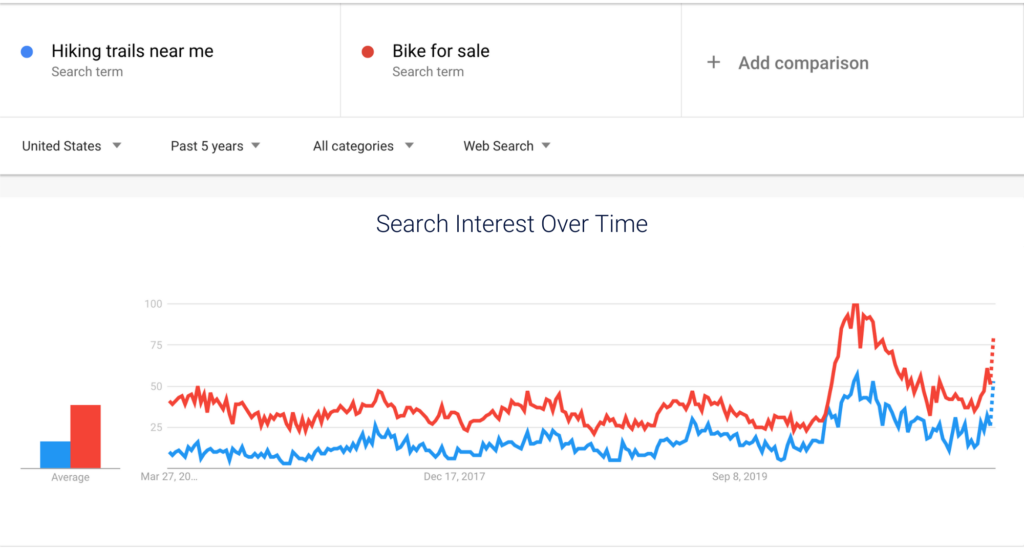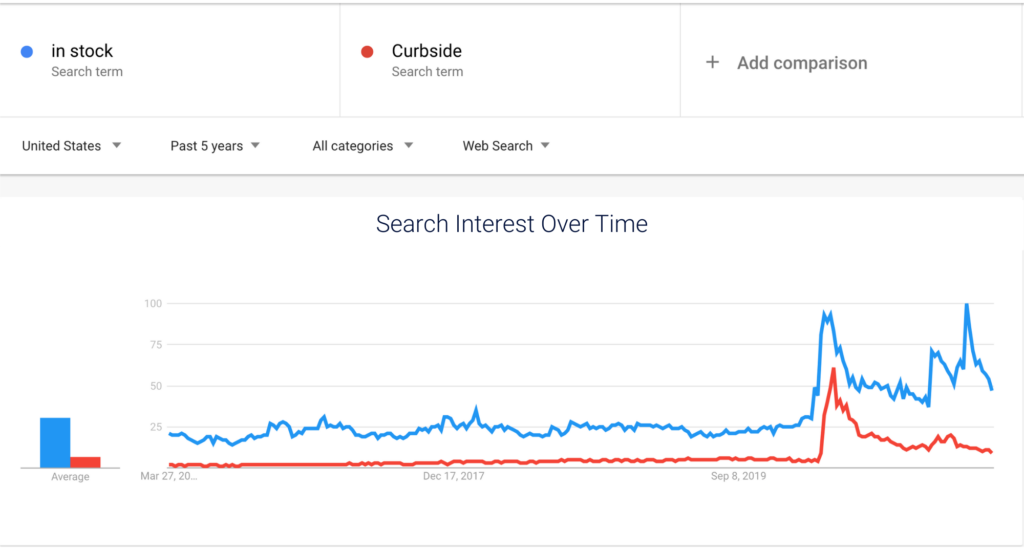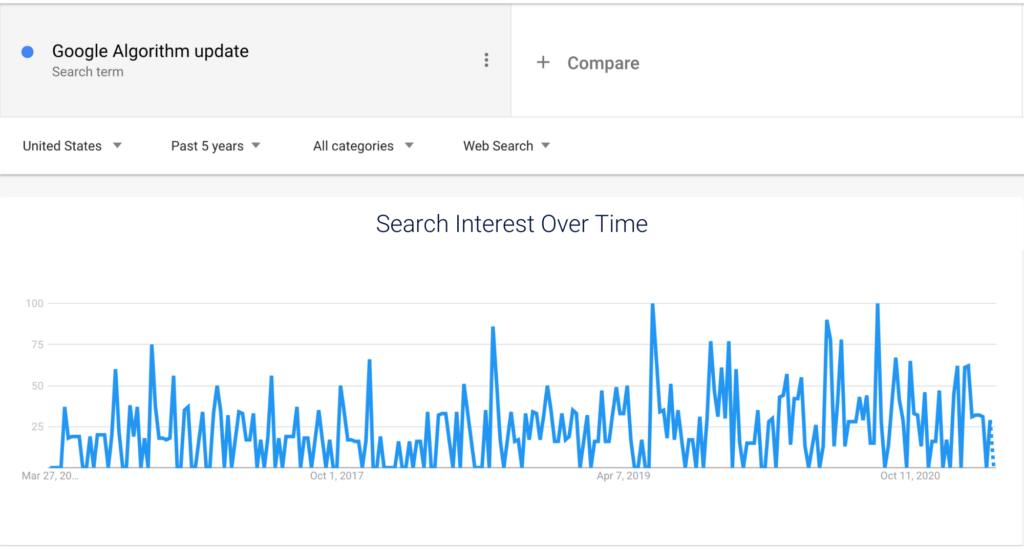
All in the Search
This month a year ago our collective world was turned upside down. Things that hadn’t seemed “risky” before — going to the grocery store, having a dinner party, or exercising at the gym — were suddenly fraught with questions. How many people? How far apart? Indoors or out? The ongoing impacts of the pandemic cross public and personal boundaries, and leave us all changed. As digital marketers, we believe in the power of online search to connect a researching customer to the product that they are seeking. We’re going to explore how your renters and residents have changed over the past year through the lens of online search.
What You Say, and How You Say It
When you search online, the phrases you choose to use for a voice search, or type into the search bar can indicate your intent. Sometimes, we’re simply asking to solve a “need to know” mystery via Wikipedia.
But, when we’re researching to narrow our options, for example, when buying a new camera, we might search “best cameras 2021.” To learn the difference between products, we might look for the, “difference between mirrorless cameras and DSLRs.”
When we’re searching with intent to buy that item at a local business, we might call the phone number on their Google My Business listing to see if we can opt for curbside pickup. Or we might search, “Sony cameras in stock *your city’s name*” to verify which location is closest to your home, or has the best price.
What a customer searches via voice, mobile, or desktop shows their intent and where they are in their buyer’s journey. Search phrases, in general, can also give us insight into what is weighing on our customers’ minds, and how their needs have changed.
Safety
Your future renters, or future residents and their families, are concerned about safety. Prior to March 2020, there was little search interest in “masks.” That changed dramatically as states, cities, and local businesses implemented CDC-recommended guidelines for masks and social distancing.
Note that pre-pandemic mask searches peaked around Halloween each year. Prior to 2020, when we heard the word “masks,” we used to think of costumes instead of face coverings. Let’s look at a contextually similar example, that considers the same need, but through different search terms. As winter approached, many people wanted to continue socializing with their friends and family, safely and within their comfort level. Since outdoor events are considered safer, consumers were looking for ways to make the outdoors more comfortable, even in cooler weather.
Searches for outdoor dining, fire pits, and patio heaters are well above their trends for the past five years:
We also know that with gyms closed many people turned to the outdoors for exercise, for new hobbies, and of course for their mental wellbeing.
This focus on the outdoors has changed the needs of many renters and residents. For apartments, including information about shared outdoor spaces or balconies will connect with renters interested in these amenities. In self storage, your renters might need to make space in their 10×10 hobby closet for a new bike. For senior living communities, access to outdoor spaces during visiting hours can safely reunite loved ones.
Convenient
For years we’ve been saying that customers want intuitive online experiences, and on-demand answers to their questions. This isn’t new information, but it’s amplified as a result of the past year. Check out this graph of “in stock” and “curbside” searches. For the first time in many of our lives, items were out of stock or back-ordered for months because of global supply chain disruption. It was hard to know if even household items we take for granted would be in the grocery store, until we all caps NEEDED them (i.e. toilet paper). And on a more serious note, personal protective equipment for first responders became scarce. This scarcity-mindset changed our ability to trust that items would be in stock at retailers.
Additionally, curbside pickup serves two needs. The first is safety. But, even after all of this is over, the ease of curbside pickup is now an expectation. Convenient buying processes that give us more time to do all of the things we both want and need to do, help customers with their busy schedules.
Of course, shopping for an apartment, leasing a storage unit, or finding a new place for your parent to live is a more complex decision than ordering groceries online. But, for the past year, your prospects shopping experience has completely changed. Now even more than in 2019, customers expect intuitive websites that easily answer their questions and allow them to determine if they want to reach out for more information — or if reaching out is a waste of everyone’s time.
What Does This Mean for Marketers?
Glad you asked. How your customers search both in terms of multi-mode (voice, or typed out search queries) and multi-device (smart speaker, mobile, desktop) changes. It’s important to stay up-to-date with changes in search engine optimization. Check out this graph showing how often Google’s algorithm update is searched.
Clearly, there have been many algorithm changes over the years as online search grew with the internet. But think about all those updates through the marketing lens. What would happen if you stopped updating and tailoring your website content to be found on search engines? If you aren’t adjusting to algorithm updates and answering the questions of your renters and residents, you’re less likely to show up in the search engine results page and you’re not putting your best foot forward. When you think about and plan for the needs of your renters and residents, you’re more likely to build authentic, trustworthy relationships.
Voice Search
Voice search is a rapidly rising digital trend to consider in your SEO strategy. As a marketer, this isn’t new information, but perhaps you’re a little skeptical about voice search. Do you think it sounds too much like a reality television singing competition with the button-powered red swivel chairs, and less like a way someone is going to look for a new apartment, storage unit, or senior living community?
Consider this, according to Moz, 65% of searches start on smartphones, and 60% of searchers then continue on desktop or laptop devices. We know the tendency to use voice search is higher on a mobile device, than a desktop device. And, if the trend already exists to move from mobile to desktop once the searcher’s interest is piqued, then that trend will likely continue with voice search. You need to know that when you break a link in this search chain, and don’t optimize for multi-mode, cross-device searcher habits, you’re unknowingly not reaching some prospects.
While we know from our data-backed websites that searchers want to see beautiful photographs or videos of your property, we also know that your renters’ and residents’ buying journey is varied in length…and, it doesn’t begin at a decision making point. If we go back-to-the-basics of customer journeys, we know that they begin with awareness and consideration. Voice search helps your property reach prospects in this phase of their buyers’ journey and ensures they stick with you through lease signing and move-in.
On Trend
Curious to learn more about the ins and outs of voice search and top trends in digital marketing? Check out Part 2 of the G5 MarTech Series. Already downloaded the report and want to get more out of it? Our Digital Trends Workbook is ready to walk you through some reflective journaling about how and where your multifamily property, self storage property or senior living community’s marketing could be seamlessly aligned with the latest digital marketing trends.
Get News, Articles & Updates in Your Inbox
Thank You for Your Interest
We will be in contact soon and look forward to learning more about you and your company. Based on your marketing challenges, we’ll discuss increasing visibility into your analytics and how to generate more and better leads so you can achieve your marketing goals.
In the meantime, we invite you to check out our checklist on website accessibility. Use this checklist to start assessing the baseline accessibility of your website.
Enjoy! We’ll be in touch very soon.

